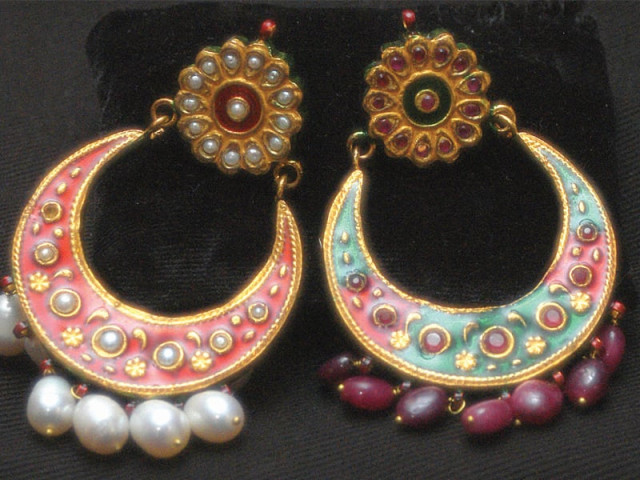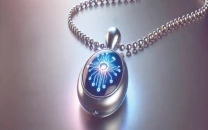All that glitters
Qamarunnisa Khan experiments with various metals to revive antique jewellery.

In a society where glamorous has come to mean ostentatious, jewels that do not sparkle have taken a back seat and dusty heirlooms have been vaulted in bank lockers to be resurrected only at family weddings.
It’s all about who makes the biggest bang with the overt show of the biggest buck. Yet, Qamarunnisa Khan is working painstakingly to restore the glory of old jewels while simultaneously ensuing that they become affordable for women to bring them back in vogue from their recent fashion obscurity. “There was a time we spoke about ‘tolas’, then grams and now it’s just milligrams,” said Khan in candid conversation with The Express Tribune. She experiments with various metals to revive antique jewellery but gives them a gold finish. She’s found an apt home for her treasures at Lahore’s Hauz Khas, a store that houses antique furniture and indigenous clothing in an atmosphere of an aging ‘haweili’.
Titled ‘Pukhraj’, the brand stood out amongst the various female jewelers at the 9th Women’s Lifestyle Exhibition for the stunning pieces that were reminiscent of the lost splendor of the Mughal era. As a passerby would approach her stall and lift a piece to admire its craftsmanship, Khan would give her a trajectory of the piece, its historical significance and how it came into being. “I want young girls to wear jewellery with the same aplomb that they wear their designer bags. I want them to say that this is a shah jahani amulet or these are Noor Jehan earrings,” states Khan who wants to bring traditional heirlooms back into contemporary life. This is a feat, that Indian jewelers have managed successfully with publications like Indian Vogue publishing designers who have innovated on traditional designs or are teaching women how to use these pieces with modern attire. Khan who also stocks in Dubai is very proud that a majority of her clients are Indians which gives her a chance to teach them about confluence in Islamic architecture and jewellery, such as that demonstrated in a pair of Asif Jha feroza and pearl ‘jhumkas’ inspired by circular tombs.
“What is missing now, unlike the previous eras, is that clothes and jewellery does not identify a personality,” laments Khan.
“Jewellery is intended to make a woman feel beautiful. Hence, even if it’s just a small pair of sterling silver earrings that working women wear, they should take the time to put them on carefully so they feel special,” she says. At a time where women have overdosed on ‘bling’, there’s hardly any room for jewellery with character to breathe despite the fact that jewels are an important part of one’s personal lineage and heritage.
“There’s a history behind every piece and even something as trivial as a three or four petaled flower,” says Khan who is in quest of a professor with whom she can study for a Phd. She is currently researching on metallurgy at the Punjab University.
Traditionally however, Khan educates me; jewellery denoted a woman’s station in life and her role and perception in society. So the Rajasthanis would heavily ornament their women starting from a headpiece that would ensure that her head is always bowed, to structured earrings that would make it difficult for her to move her head to and fro to ensure that what she hears from one ear does not pass on from the other, to an elaborate neck piece that would further make her bend over as a reminder of her subservient role to a man. As the muslim role for women was far more emancipated, the Mughal jewellery, particularly the ones that Empress Noor Jehan designed were heavy, but did not weight a woman down. Her crown for instance, was a derivative of a ‘takht’ at the court in Lahore which was all encompassing around the head to denote her powerful and dominating presence in all matters of the court.
“Jewellery is actually a circle of life. No piece can stand alone,” Khan philosophises. She narrates a tale of how some of her novae riche clients come to her insisting that she make jewellery that looks old so they can show off that they too come from a higher pedigree. With pieces that start from a few thousand rupees, Khan sees herself as a revivalist of heritage that should be resuscitated to life by allowing women to wear their heritage with pride.
Published in The Express Tribune, March 18th, 2011.


















COMMENTS
Comments are moderated and generally will be posted if they are on-topic and not abusive.
For more information, please see our Comments FAQ